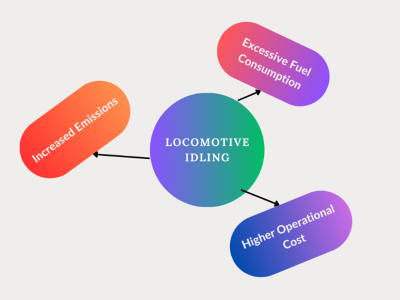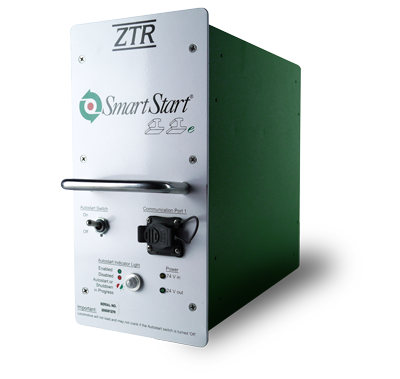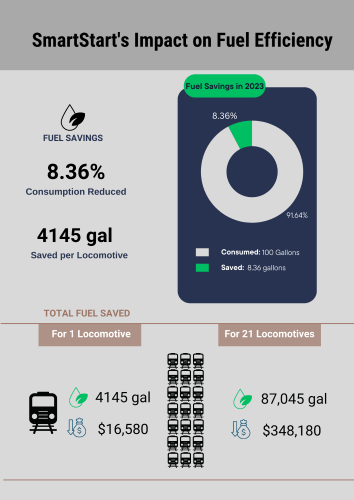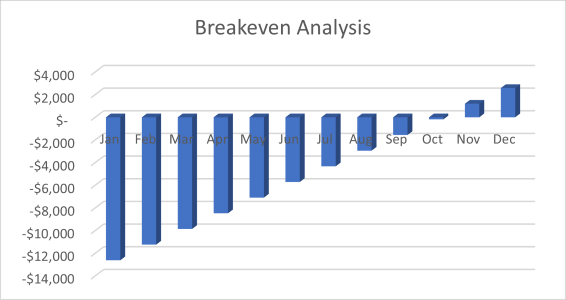Overview
In the pursuit of operational efficiency and environmental sustainability, a prominent Class 1 rail company implemented SmartStart Automatic Engine Stop-Start (AESS) systems on its fleet. This case study examines the tangible benefits realized by installing SmartStart on 21 SD40 locomotives, focusing on fuel savings and improved operational performance during the year 2023.
Background on SD40 Locomotives
The EMD SD40 is a 3,000-horsepower diesel-electric locomotive built by the Electro-Motive Division (EMD) of General Motors between 1966 and 1972. Known for its reliability and robustness, the SD40 has been a staple in the locomotive fleets of many Class 1 rail companies. These locomotives are powered by the EMD 645 series engine, which has proven to be both powerful and efficient for a wide range of freight operations. Over the years, SD40s have undergone various upgrades and modifications to extend their service life, including the integration of advanced technologies such as the Automatic Engine Stop-Start (AESS) systems. The adoption of SmartStart AESS on these locomotives has further enhanced their operational efficiency, significantly reducing fuel consumption and emissions, while maintaining the high performance that these locomotives are known for.
Company Overview
The rail company, a leader in freight transportation, operates an extensive network spanning several thousand miles. With a commitment to innovation and sustainability, the company continually seeks advanced technologies to enhance efficiency and reduce its environmental footprint.

Locomotive idling is a significant issue in the rail industry, leading to excessive fuel consumption, increased emissions, and higher operational costs. The company sought a solution to mitigate these challenges and improve overall fuel efficiency without compromising operational readiness.
SmartStart AESS

SmartStart AESS, developed by ZTR, is an advanced system designed to automatically shut down and restart locomotive engines based on real-time operational data. By monitoring critical parameters such as battery charge, engine temperature, and operational status, SmartStart minimizes unnecessary idling, thereby saving fuel and reducing emissions.
Implementation
The rail company installed SmartStart systems on various locomotives over several years, with a particular focus on data from 2023 for this case study. The implementation process included:
- System Installation: SmartStart systems were integrated into the existing locomotive infrastructure over a phased approach.
- Training and Support: ZTR provided comprehensive training for the rail company's maintenance and operational staff to ensure smooth adoption and optimal use of the SmartStart systems.
- Monitoring and Analysis: Continuous monitoring was conducted to assess the performance and impact of the SmartStart systems.

The deployment of SmartStart yielded significant benefits:
- Fuel Savings: On average, each locomotive equipped with SmartStart saved 4,145 gallons of fuel in 2023.
- Increased Shut Down Count: The average number of shutdowns per locomotive increased by 532, indicating more frequent engine stops during idle periods.
- Fuel Consumption Reduction: The percentage of fuel saved over fuel consumed was 8.36%. This means that for every 100 gallons of fuel consumed, 8.36 gallons were saved due to the SmartStart system.
Fuel Savings Breakdown
- Total Fuel Saved: 21 locomotives x 4,145 gallons/locomotive = 87,045 gallons
- Cost Savings for One Locomotive:
- Fuel Saved: 4,145 gallons
- Cost Savings: 4,145 gallons x $4/gallon = $16,580
Total Cost Savings: 87,045 gallons x $4/gallon = $348,180

The breakeven period for the investment in SmartStart was less than one year, considering the significant cost savings achieved through reduced fuel consumption.
Operational Efficiency
- Reduction in Idling Time: The increased shutdown count demonstrated a substantial reduction in idle time, directly correlating to decreased fuel usage and wear-and-tear on engines.
- Enhanced Compliance: SmartStart's efficient fuel management helped the company align with stringent environmental regulations and reduce its carbon footprint.
Conclusion
The implementation of SmartStart AESS systems on the SD40 locomotives significantly enhanced fuel efficiency and operational performance for the Class 1 rail company. The tangible benefits, including substantial fuel savings and reduced emissions, underscore the effectiveness of SmartStart in addressing the critical challenges of locomotive idling.
By investing in SmartStart, the rail company not only achieved its sustainability goals but also set a benchmark for innovation and efficiency in the rail industry. This case study highlights the potential of SmartStart to drive meaningful improvements in fuel management and operational excellence.
About SmartStart
SmartStart is a state-of-the-art AESS solution designed to optimize locomotive operations. Developed by ZTR, SmartStart leverages advanced sensor technology and real-time data analysis to automatically manage engine idling, ensuring maximum fuel efficiency and reduced environmental impact. With proven success across diverse locomotive fleets, SmartStart represents a pivotal advancement in rail industry technology, paving the way for a more sustainable and efficient future.
For more information on how SmartStart can transform your rail operations, visit here or fill out the following form and we’ll get in touch.